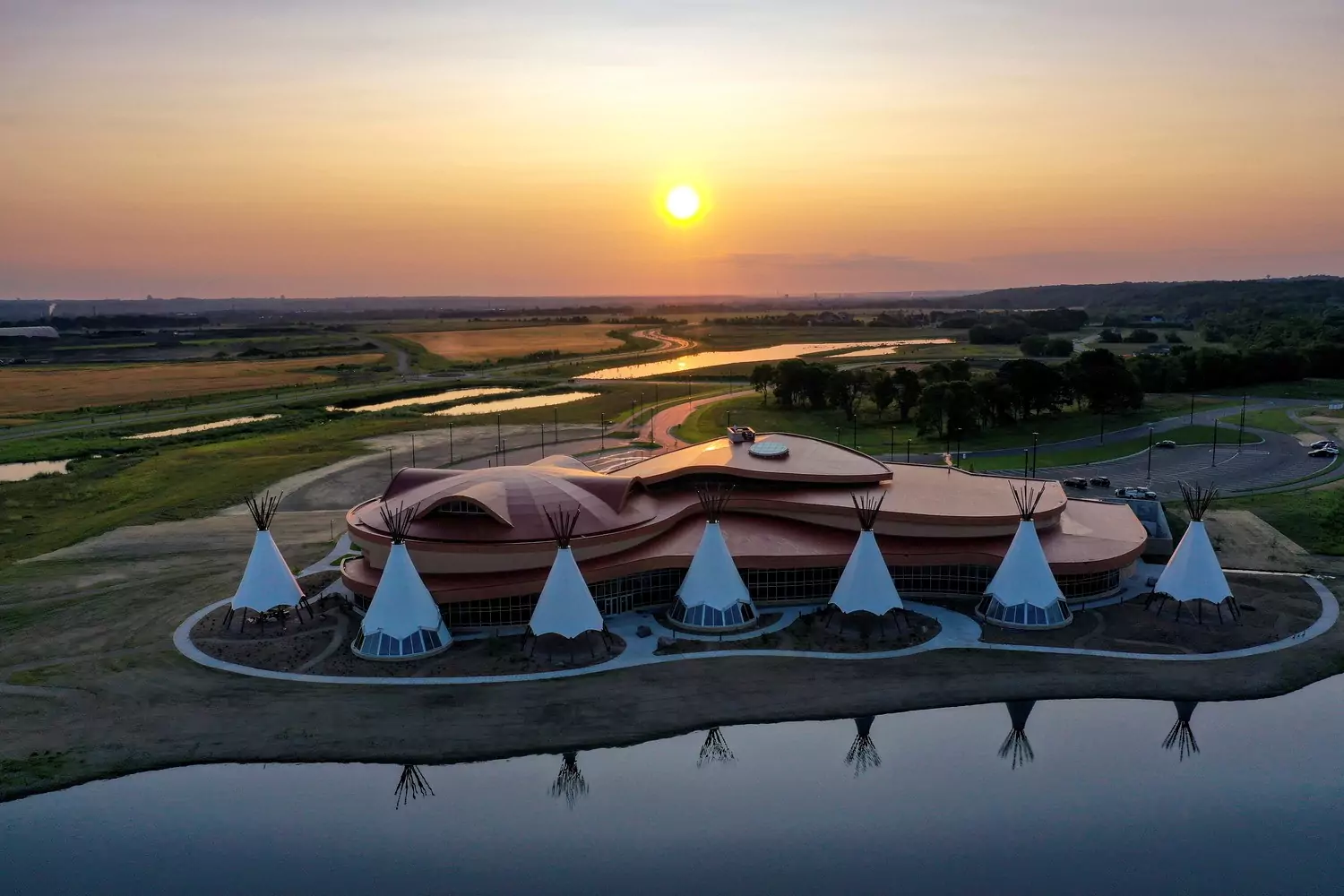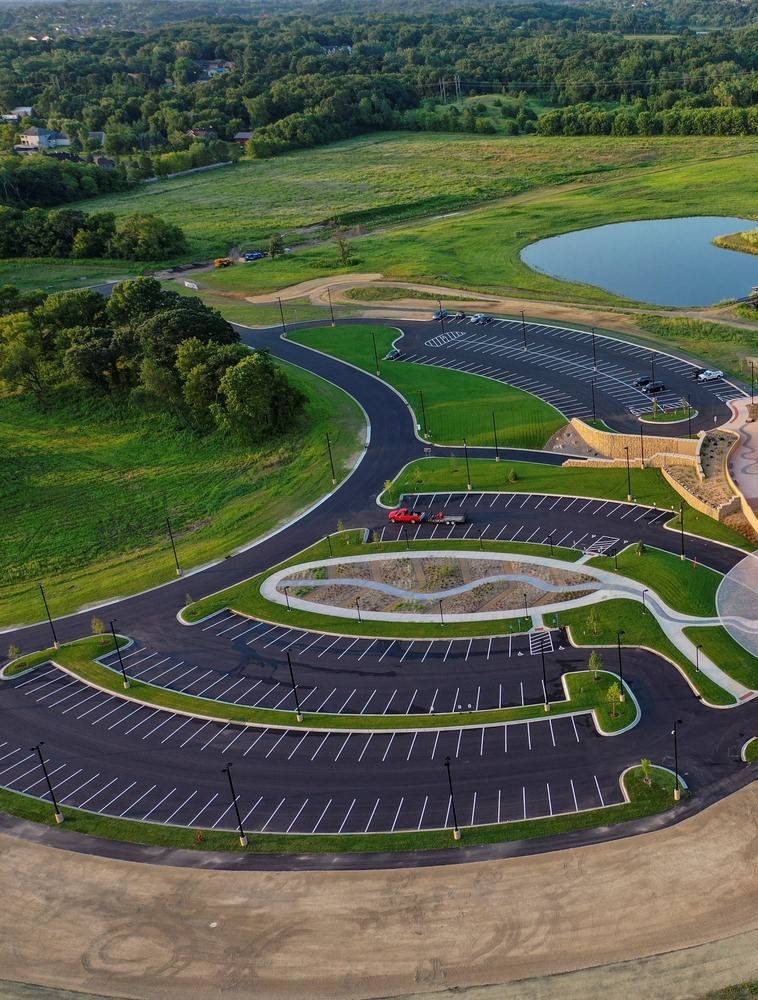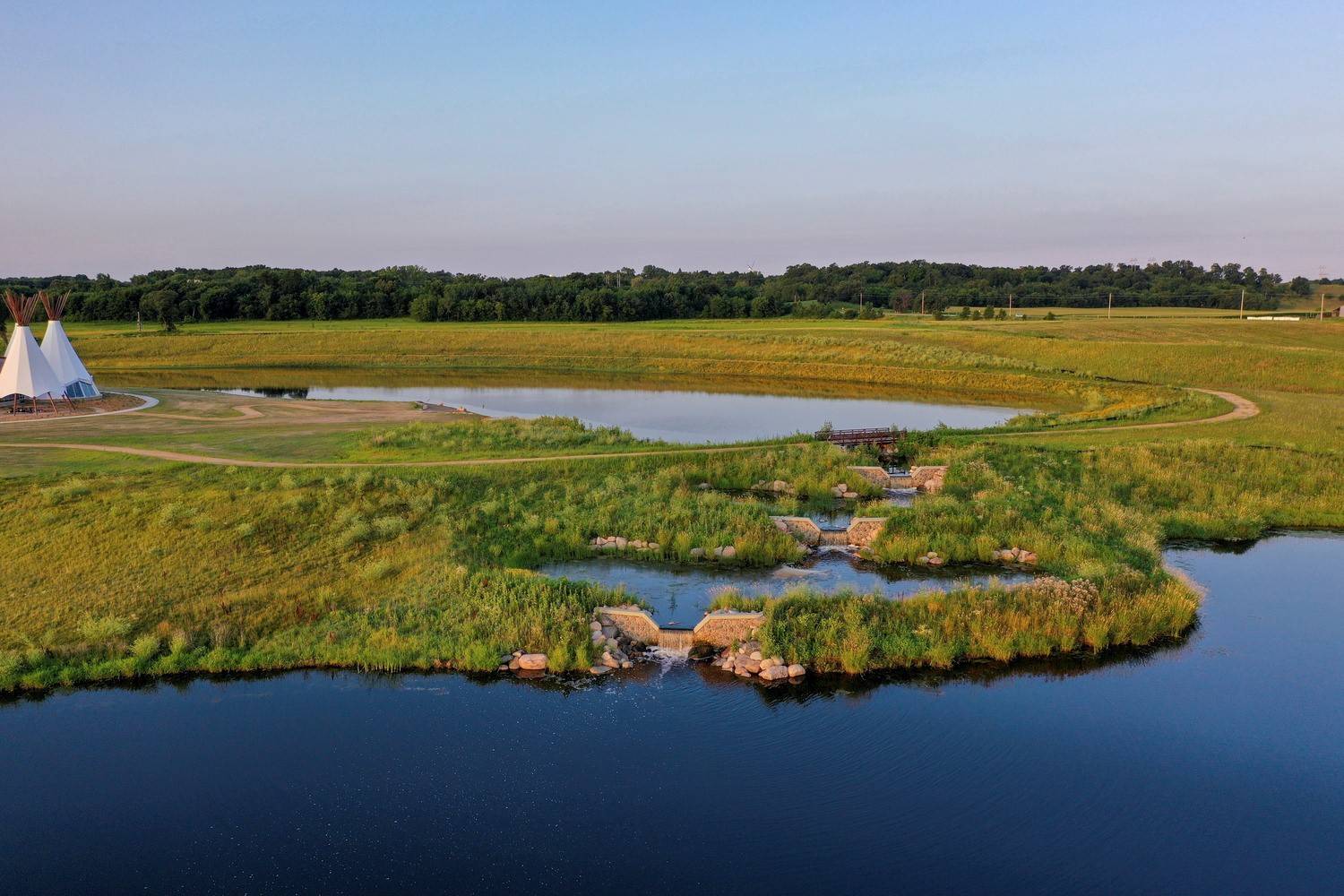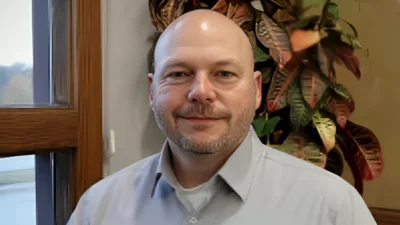Bolton & Menk Inc issued the following announcement on July 22.
Up until 2019 the Shakopee Mdewakanton Sioux Community (SMSC) of the Dakota people gathered in multiple locations with a growing need for a single facility to teach their youth, attend cultural events, and host council meetings. The community’s beautiful new 3,805-square-foot Hoċokata Ti, or Place of Gathering, weaves together the rich history of living in harmony with their surroundings and sharing their natural and material resources with others, while laying a foundation for future generations.
Bolton & Menk worked with the community to develop a site plan to accommodate the cultural center and potential future buildings within a larger campus. Civil and landscape architectural staff designed site amenity elements for community members to embrace the natural environment around the facility. Every square foot of the SMSC Campus has a purpose and is characteristic of the Dakota people’s culture, down to the orientation of the building and progression to outdoor spaces. The intentional intertwining of cultural elements greets you in the parking lot with the Grand March Garden in the shape of a feather complete with native perennials surrounding a path representing the Minnesota River. The river pattern, which flows east to west, represents rebirth and the circle of life that is sacred to the community.
“This facility and project are beautiful in the way it fosters collaboration and community, it’s a nod to the past, and a vision of the future, but also an understanding and blending of being here now. It created spaces that allow the light to catch different areas in unique ways so the community can interact with the entire facility; cultivating discussions among people who might not interact otherwise.” said Josh Shields, senior project landscape architect.
A main goal of the landscape architecture team was to collaborate with the project team to smooth the technical aspects of this project. This included installing stone weirs between waterways to create waterfall cascades for acoustic sounds, creating ponds and waterways that allow for kayak and canoe launches, and providing habitat for wildlife. This has allowed community members to cultivate and explore the natural beauty of the area and invite native species back to the land. This project also provided an opportunity to preserve the existing landscape of oak trees and grasslands, providing beauty in the evolution of time and the changing of the seasons. These elements reintroduce nature that is native to the area and culturally significant to the Dakota people’s way of life.
Additionally, there are meeting areas throughout the campus for various activities deeply rooted in their culture, including pow wows like the Wacipi event held every August. There are detached teepees with meaningful, contrasting brick patterns, a talking circle, amphitheater, beach providing water access, pedestrian bridges, natural playscape, and a limestone path to take you through the site. Each location provides space for SMSC to ground themselves and maintain their affinity to the earth and the landscape around them. Throughout the campus, it is easy to see the elements that honor Dakota ancestors and history.
“It’s a different understanding of beauty – it’s beauty because its weaving together many of the aspects they hold dear but didn’t have access to. It’s being able to have great grandparents and grandparents in the same building as their children and grandchildren; teaching them, demonstrating, and having conversations on what the future of their community can be.” said Shields.
The first-of-its-kind, award-winning facility for SMSC is the foundation, which will provide guidance for the rest of the campus. They are not only able to preserve their history through the public exhibit of an extensive collection of artifacts, Native-made art, books, music, and craft items, but also plan for the future of their community and culture. The beautiful Hoċokata Ti is a thoughtful space that came to fruition through community input and will continue to grow for future generations of the Dakota people.
Original source can be found here.



Source: Bolton & Menk Inc



 Alerts Sign-up
Alerts Sign-up